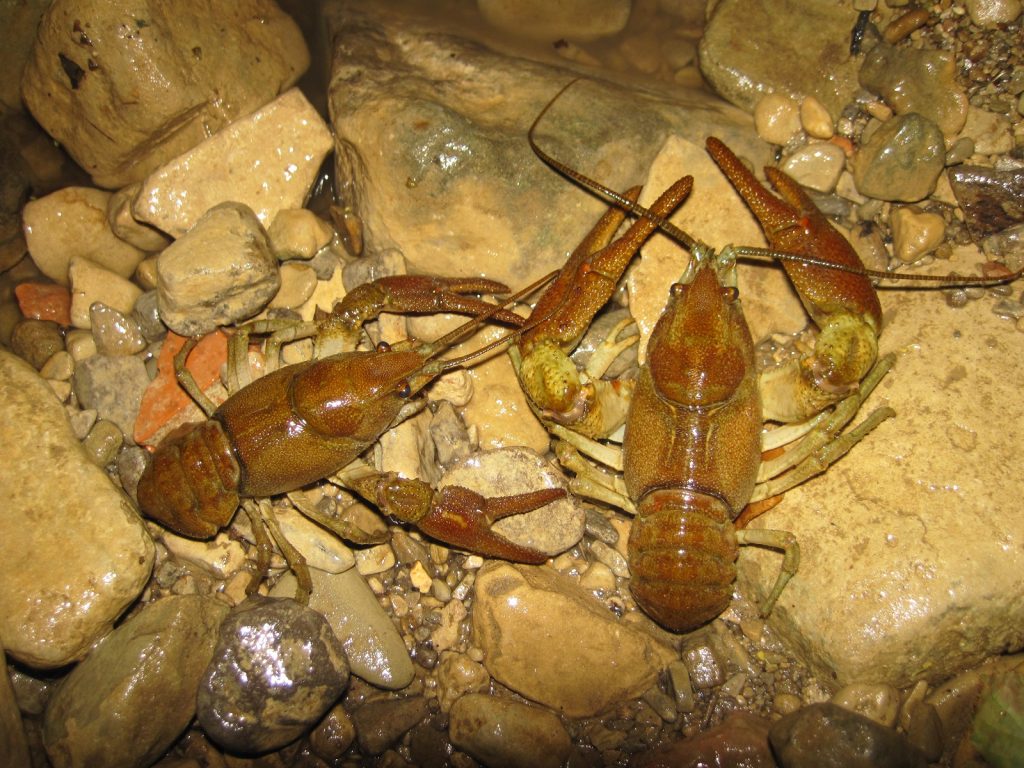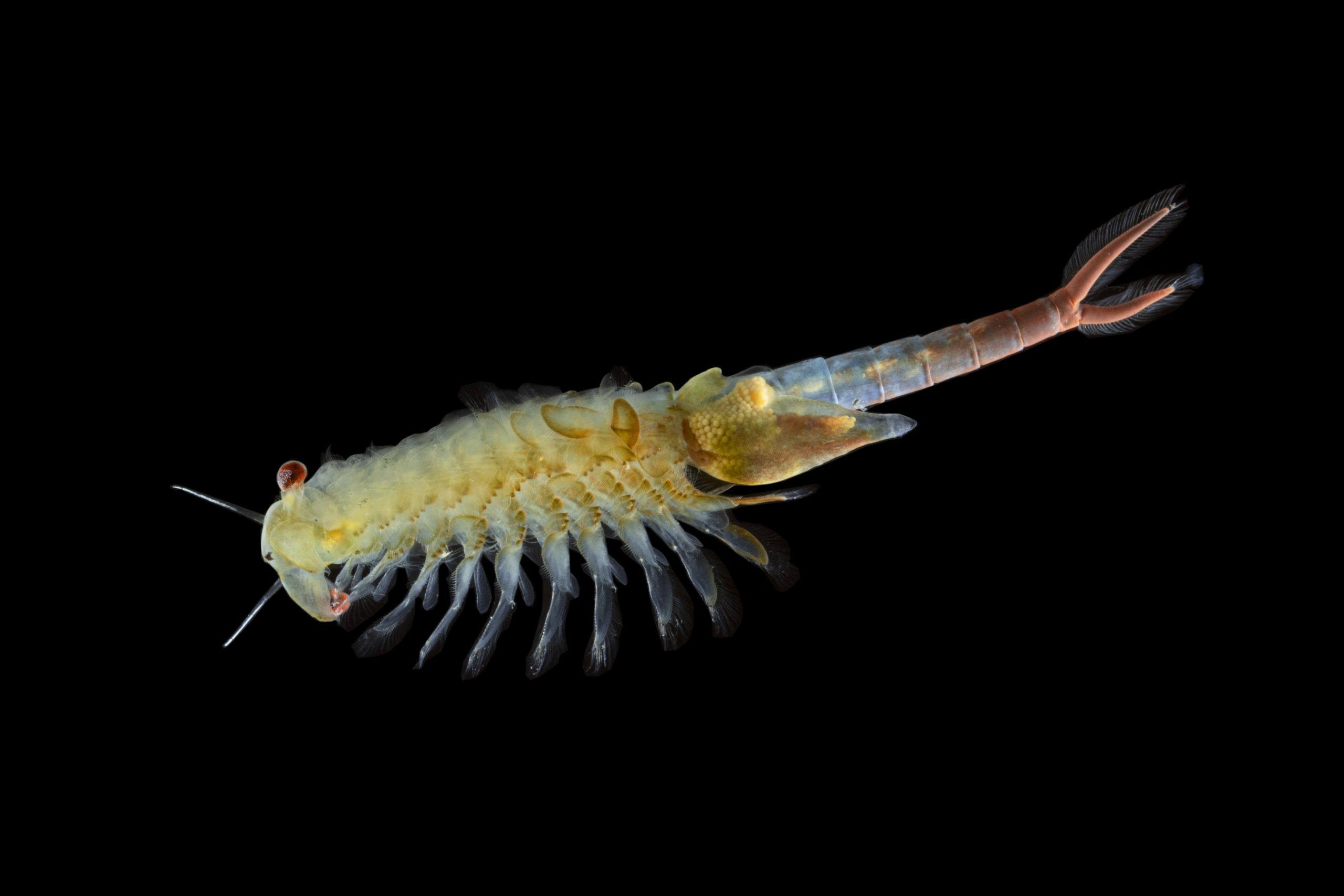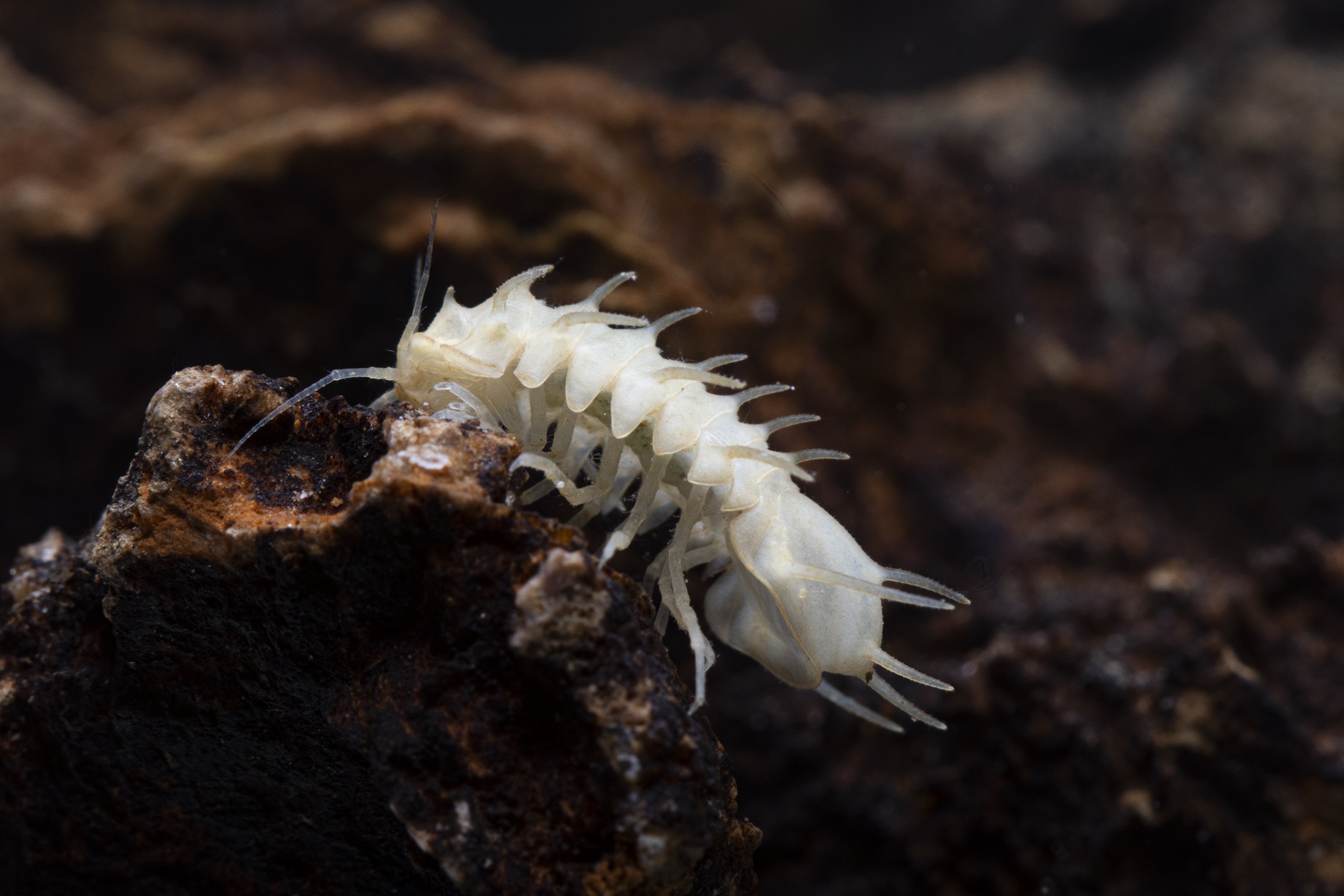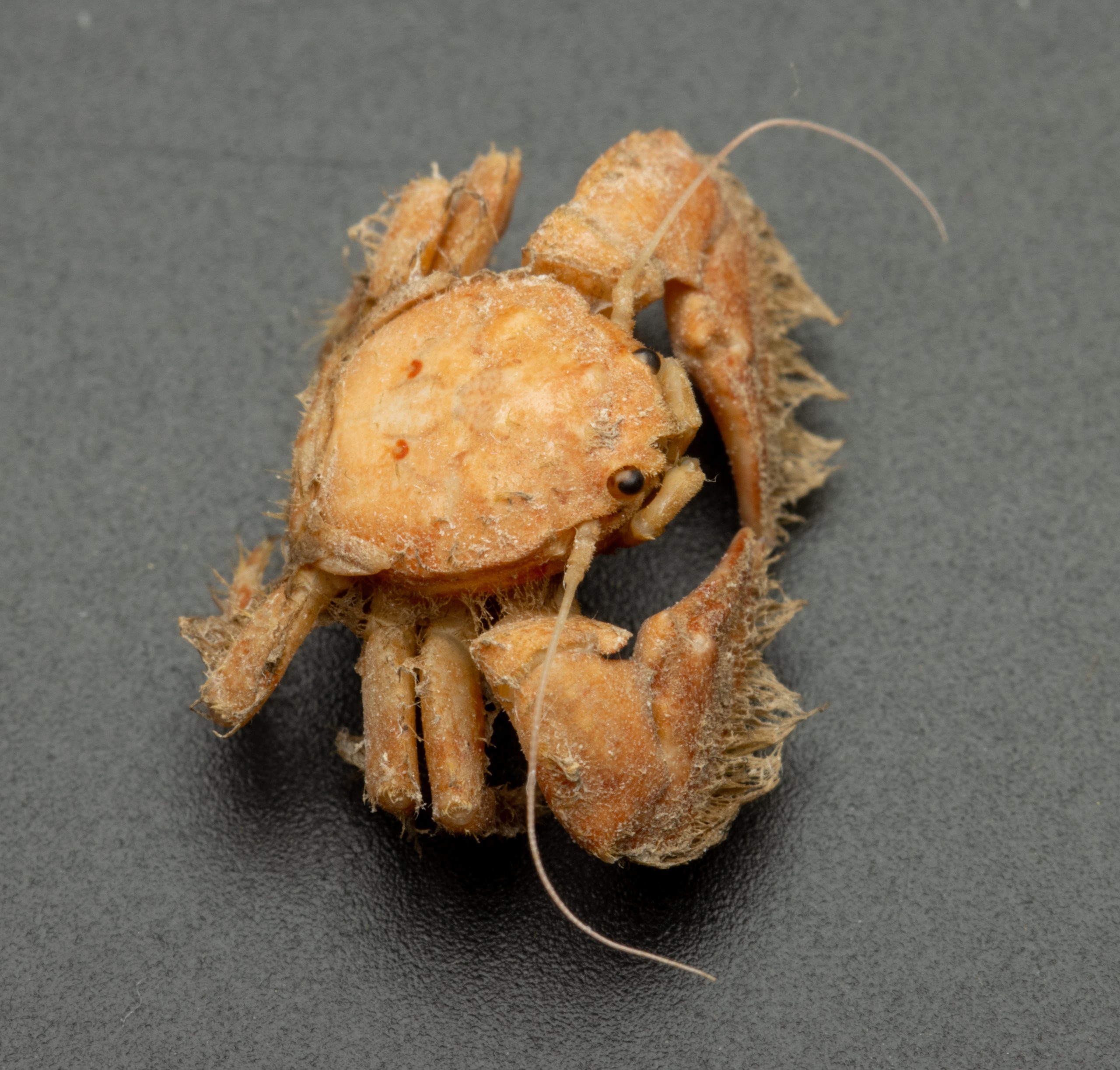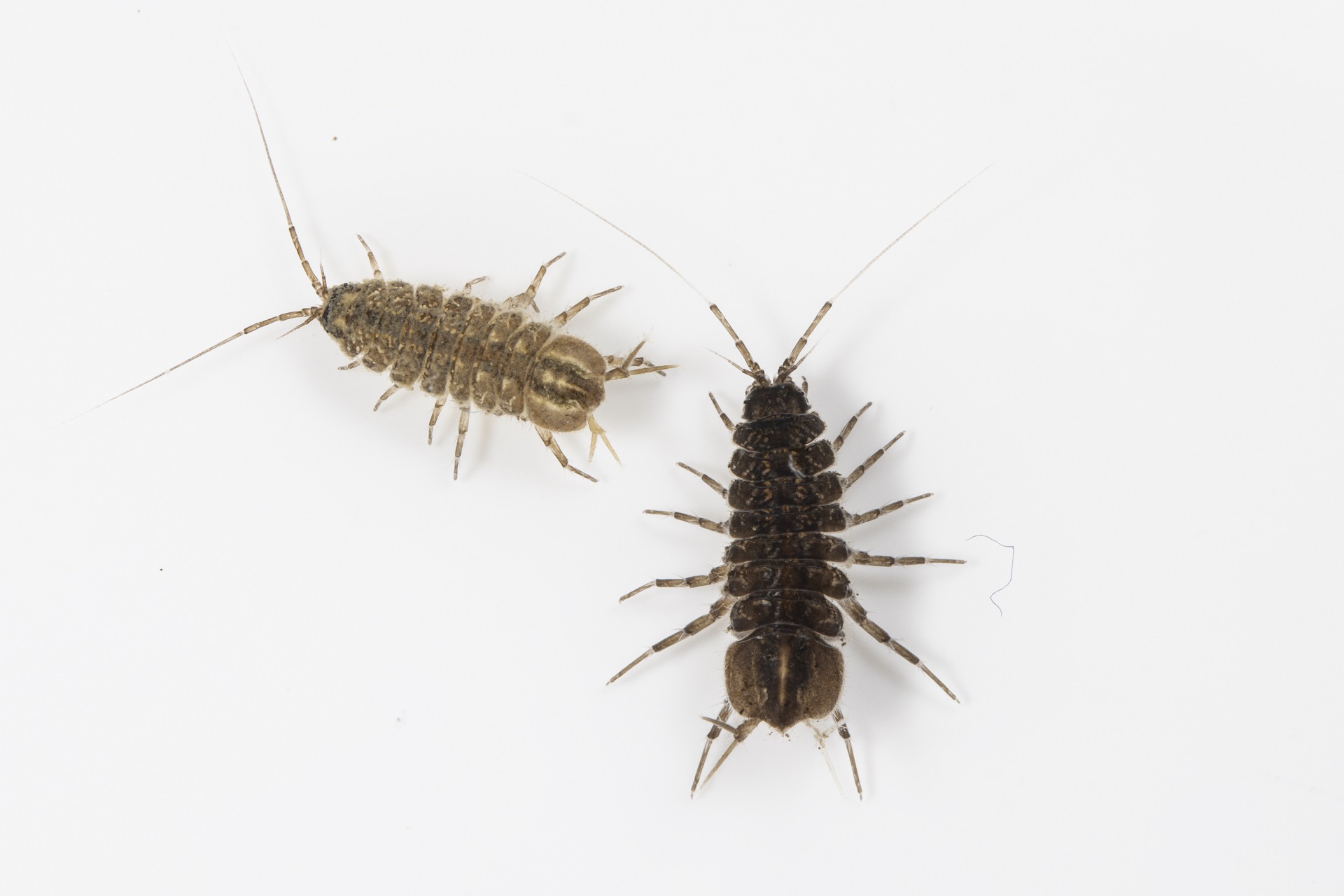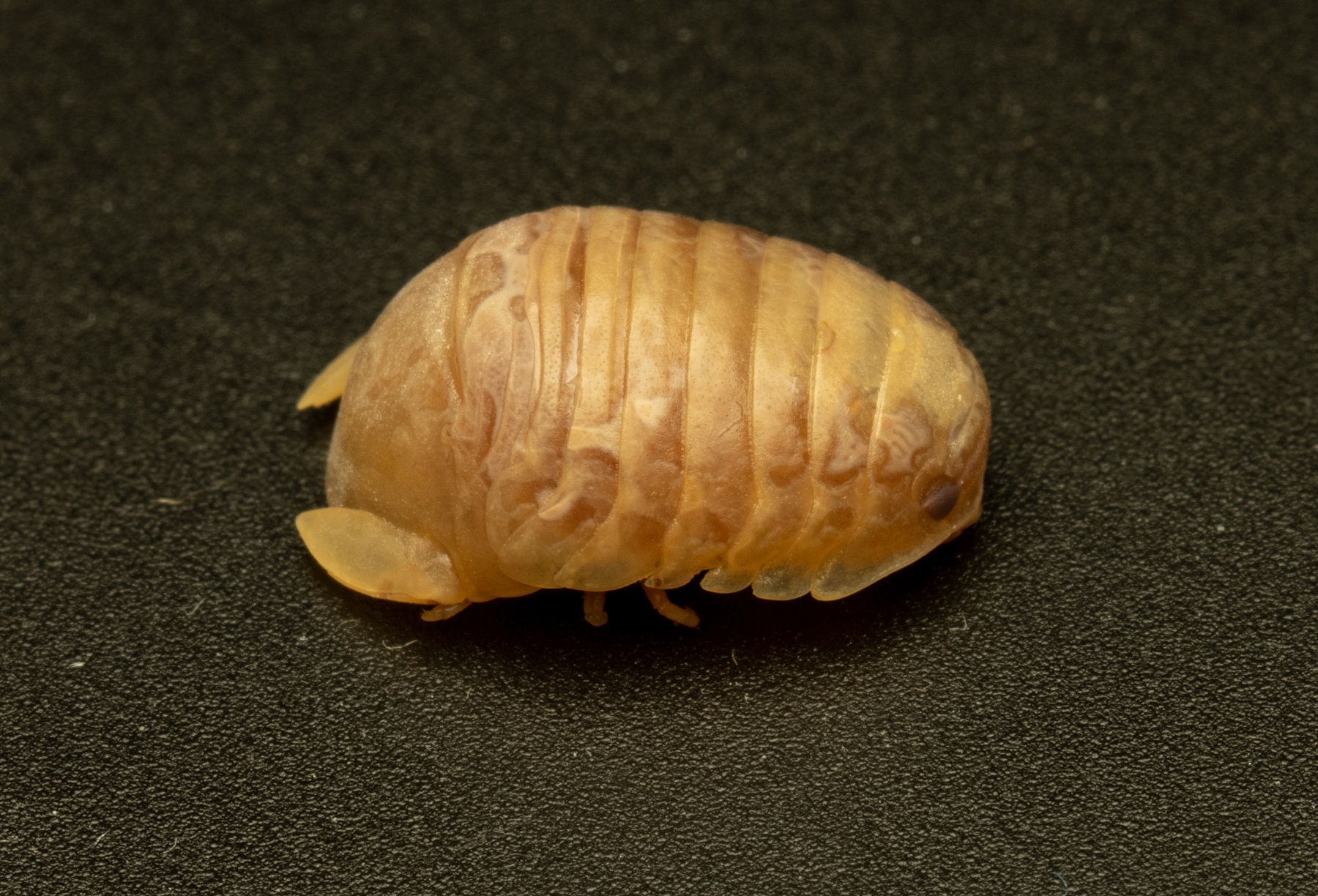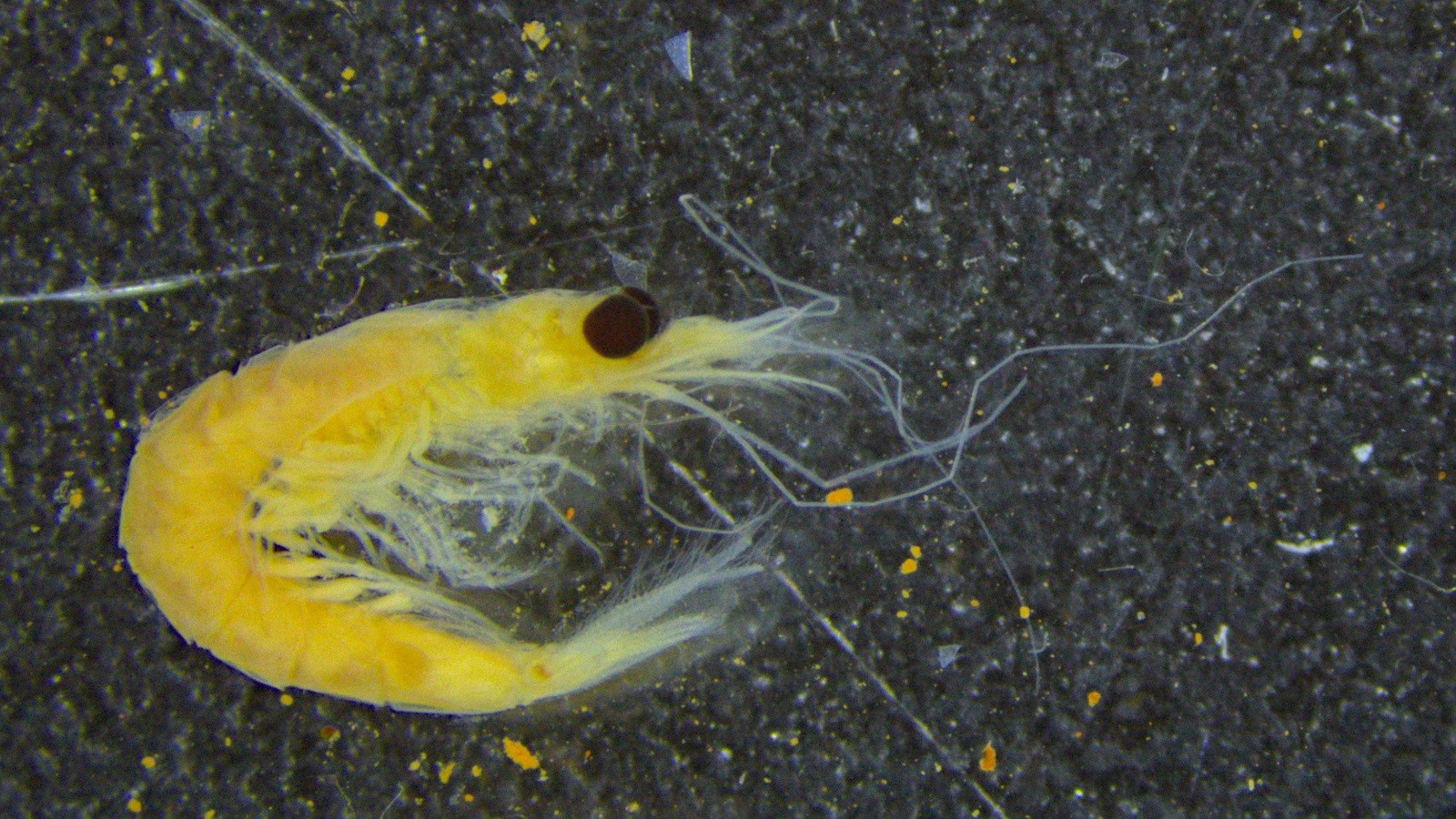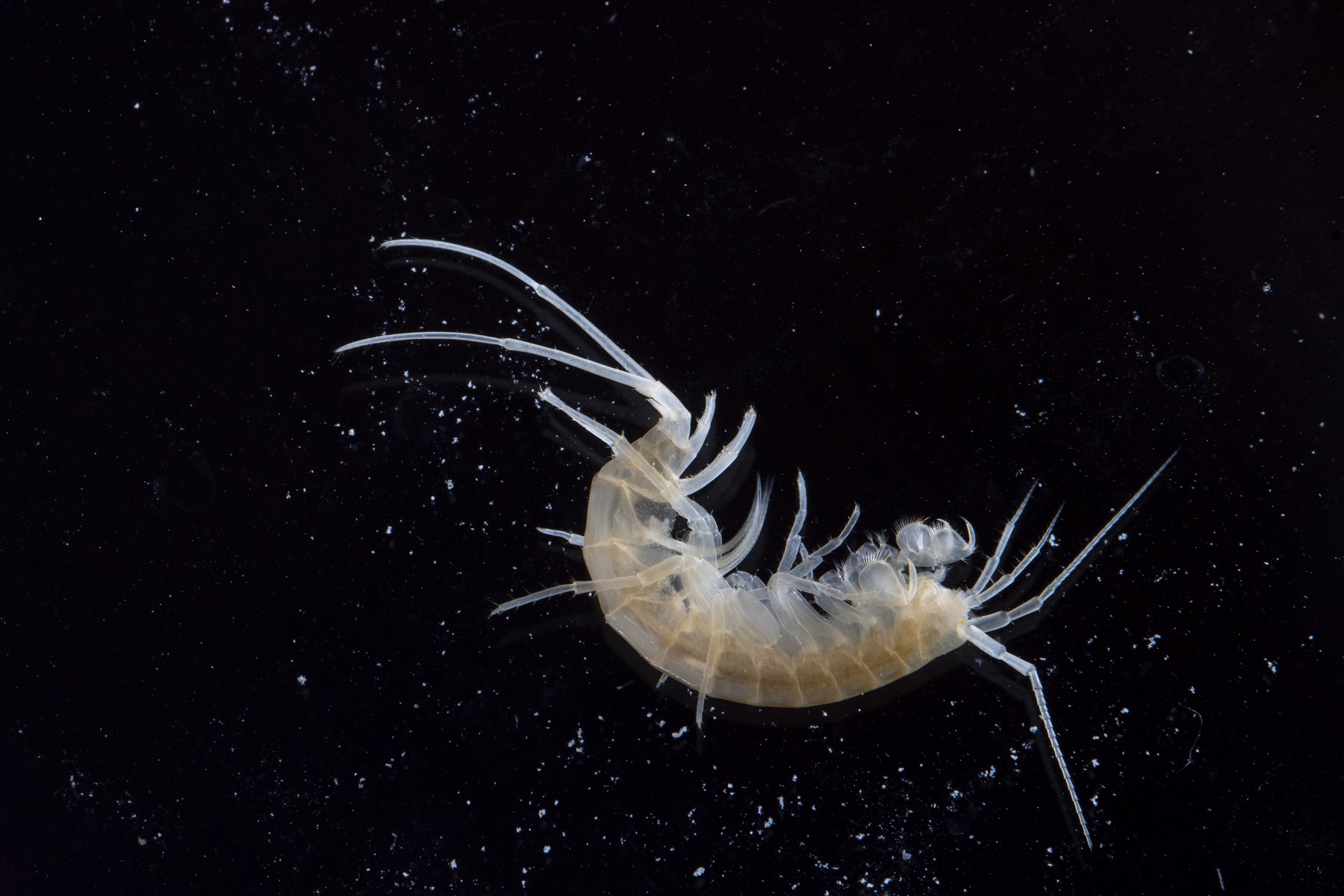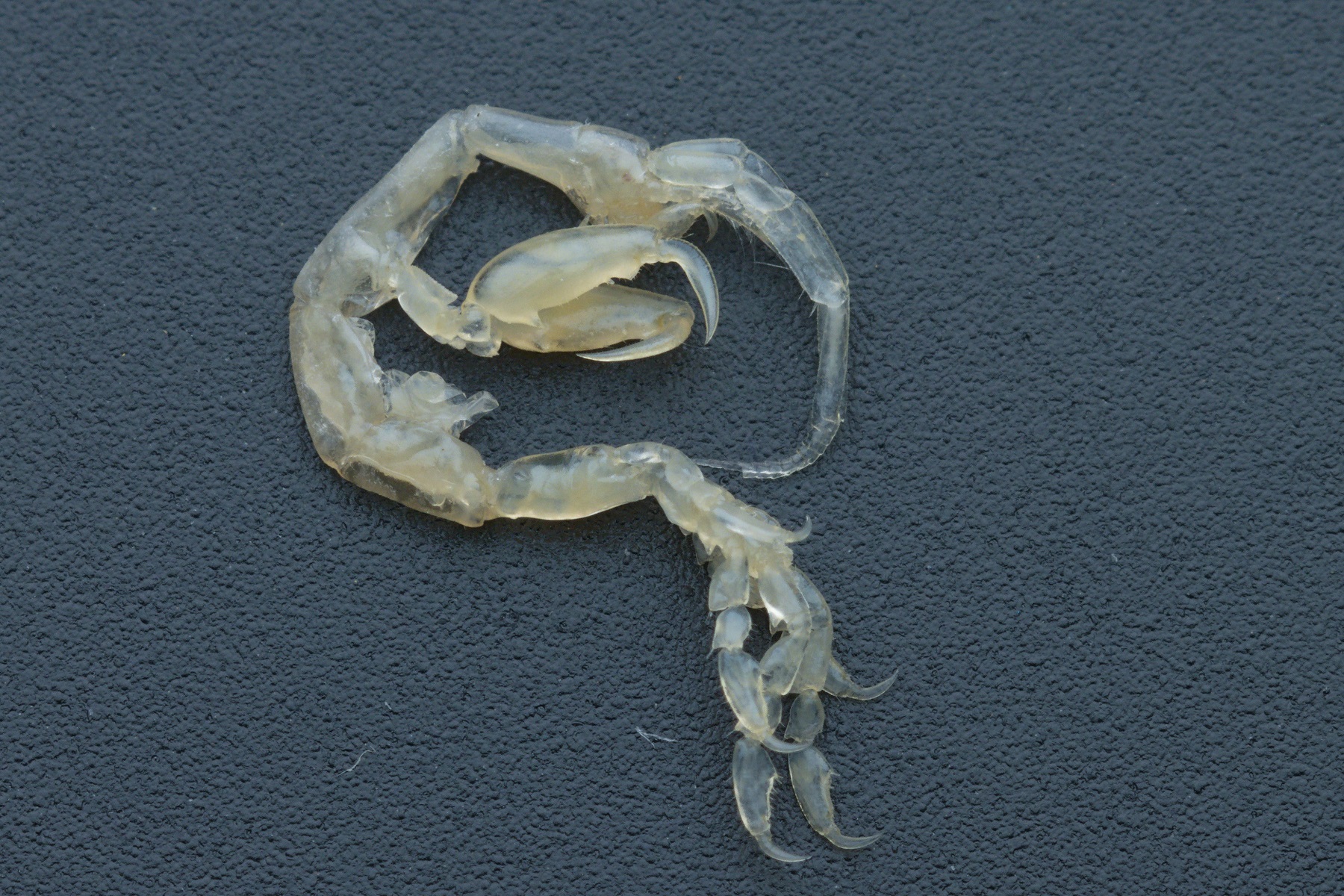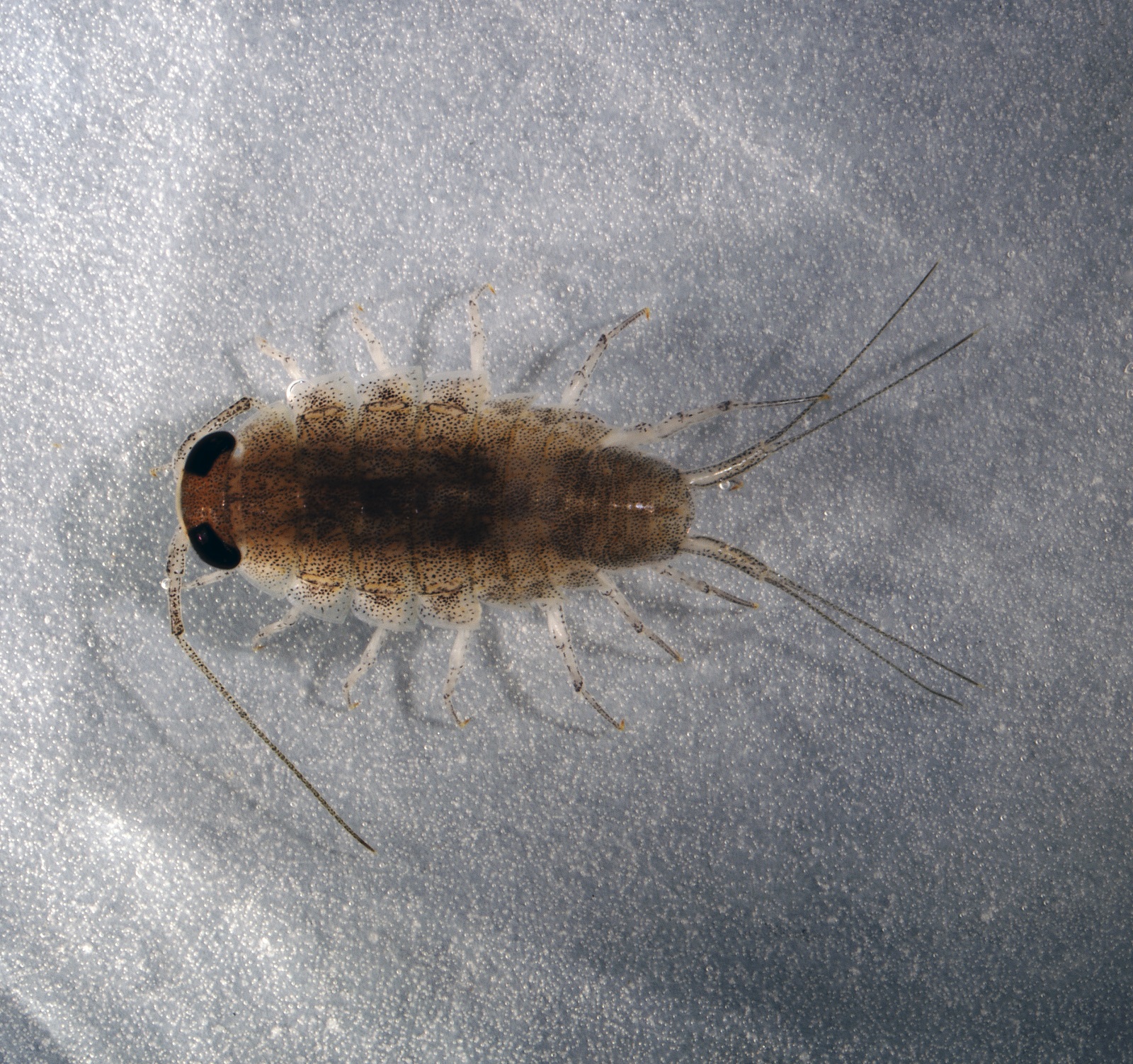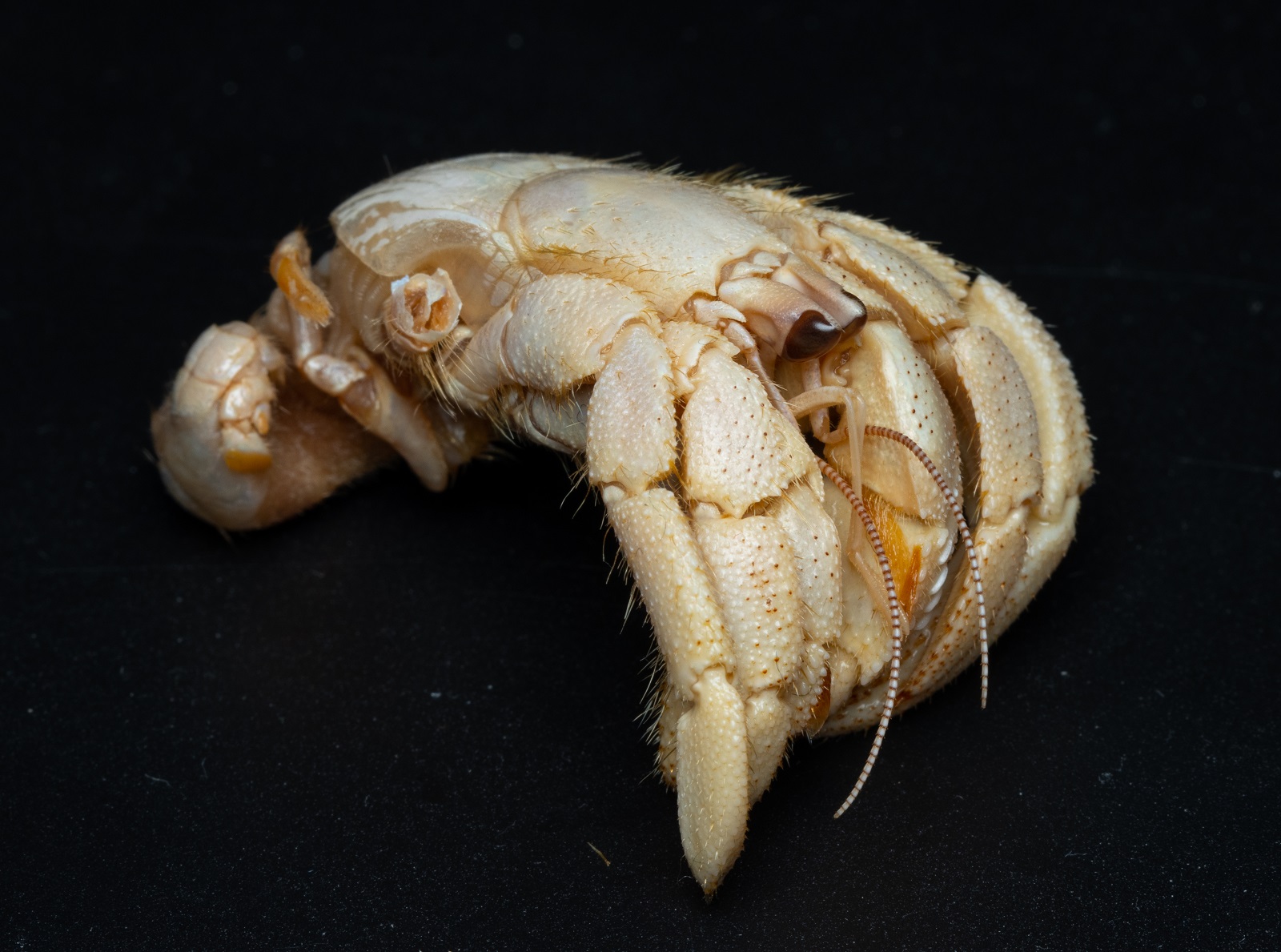- Crustaceans
Austropotamobius pallipes
White-clawed crayfish are up to 10 centimeters long crustaceans from the family of freshwater crayfish (Astacidae) which belong to decapods (Decapoda). Their body is organized into a cephalothorax, pereon and pleon (abdomen). The cephalothorax and pereon are covered by a uniform carapace, which is a chitinous fold originating dorsally, anteriorly pointed into a rostrum and laterally extending to the bases of legs. Between the body and carapace, a branchial chamber is located.
The cephalothorax consists of an acron and eight body segments. It carries a pair of stalked compound eyes, two pairs of antennae (antennae I and II), a pair of mandibles, a pair of maxillae I, a pair of maxillae II and three pairs of maxillipeds.
The pereon comprises five body segments each carrying a pair of walking legs (pereopods). The first three pairs are chelate, and the first pair is distinctly the largest one among them.
The abdomen consists of six posterior body segments and a telson. On the abdomen five pairs of biramous appendages (pleopods) are located. The last pair of appendages are uropods, which are biramous, flattened and form a “tail fan” together with the also flattened telson.
The white-clawed crayfish is one of the two Austropotamobius species occurring in Slovenia. It is distributed from southern Europe to its northern limit in Great Britain. In Slovenia it is present in Istria and Vipava valley. It inhabits clean streams which may partially dry out during the summer. During such conditions, the white-clawed crayfish gather in deeper pools in large numbers until substantial rainfall in the autumn. During the day they hide under rocks, among tree roots and in burrows. They are active during the night, when they can be observed crawling at the bottom.
In danger they can evade with quick reverse movement, when they use a backstroke of their abdomen. They feed on detritus, small invertebrates and carrion. The females carry the eggs attached under their abdomens.
More photos
Related arthropods
Authors
- Urban Bogataj,
- Gregor Bračko,
- Teo Delič,
- Cene Fišer,
- Žiga Fišer,
- Rok Kostanjšek,
- Rudi Verovnik,
- Miloš Vittori,
- Valerija Zakšek.
Students Vito Ham, Vesna Jurjevič, Gaj Kušar, and Adrijan Samuel Stell Pičman also participated in the project.
